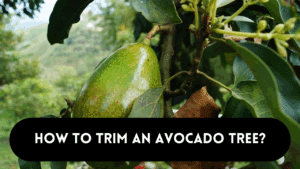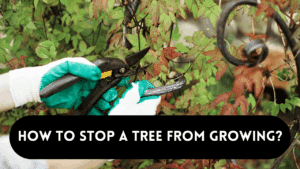Mastering small tree removal is about gaining the knowledge, skills, and confidence to safely and effectively remove small trees from your property. It involves understanding when and why tree removal is necessary, selecting the right tools and equipment, adhering to safety precautions, and considering the environmental impact of your actions. By mastering small tree removal, you’ll be equipped to enhance the aesthetics of your landscape while ensuring the safety and health of your property.
Assessing the Need for Removal
Evaluating the Condition of Your Trees
It involves the following points:
- Visual inspection
- Bark health
- Leaf condition
- Root health brand stability
- Pest and disease signs
- Safety concerns
Legal and Environmental Considerations
- Understanding local regulations.
- The ecological aspect of tree removal.
- Permits and permissions.
Safety First
- Prioritizing safety during small tree removal.
- Risks and hazards associated with tree removal.
Tools Required for Small Tree Removal:
- Chainsaw: A chainsaw is a versatile tool for cutting down small trees. Ensure it’s well-maintained and sharp for efficient cutting.
- Hand Saw: Hand saws are useful for cutting smaller branches and limbs and for making precision cuts.
- Pruning Shears: Pruning shears or loppers can be handy for trimming smaller branches before felling the tree.
- Safety Gear: Safety should be a priority. Wear a hard hat, safety glasses, ear protection, and gloves to protect yourself during the process.
- Chainsaw Chaps: These protective chaps are designed to reduce the risk of injury from chainsaw kickback.
- Wedges: Tree wedges can help control the direction of the tree’s fall when making the felling cut.
- Rope and Pulley: If the tree is leaning in an undesirable direction, a rope and pulley system can be used to guide its fall.
- Stump Grinder: For complete removal, a stump grinder can be used to grind down the tree stump below ground level.
Method to Remove Small Trees
Assessment: Begin by assessing the tree’s size, condition, and location. Consider factors like the lean of the tree, nearby structures, and potential hazards.
Pruning: Start by pruning away smaller branches and limbs using pruning shears or loppers. This reduces the weight and makes the tree easier to handle.
Notching: Create a notch cut on the side of the tree facing the desired fall direction. This cut guides the tree’s fall.
Back Cut: Make a horizontal back cut on the opposite side of the notch cut. This cut should be slightly above the bottom of the notch.
Felling: As the tree begins to lean and fall, move to the opposite side of the tree and make your escape route along a predetermined path.
Stump Removal: After the tree has fallen, you can use a stump grinder to remove the remaining stump. This ensures complete removal and prevents regrowth.
Disposal: Dispose of tree debris responsibly. You can cut branches into manageable lengths for disposal or recycling, and the wood from the trunk can be used for firewood or mulch.
Rope and Pulley System: If the tree is leaning in an undesirable direction, use a rope and pulley system to guide its fall safely.
Undercutting Roots: For trees with extensive root systems, undercutting some of the roots on the side facing the desired fall direction can help weaken the tree’s stability.
Two-Person Team: If possible, work with a partner. One person can handle the chainsaw, while the other assists with guiding the tree’s fall or providing safety support.
Winching: In challenging situations, consider using a winch to help control the tree’s fall or to remove the stump after felling.
Safety: Always prioritize safety during the removal process. Maintain a safe distance, work with a partner if possible, and follow all safety guidelines for the tools you’re using.
Professional Help: If you’re unsure about your ability to safely remove a small tree, or if the tree is located near power lines or structures, it’s best to seek the assistance of a professional arborist or tree removal service.
Disposing of Debris
- Proper disposal of tree limbs and branches.
- Recycling options for eco-friendly disposal.
- Creative uses for tree debris.
Post-Removal Care
- Filling the void left by the removed tree.
- Planting alternatives for a restored landscape.
- Caring for the surrounding trees and vegetation.
FAQS
How can I successfully eliminate grass from near trees?
Common ways include hand digging, using a shovel or spade, or using mulch or ground cover to suffocate the grass.
When is the ideal time to cut the grass around trees?
Early spring or late autumn are great times to remove grass because growth is slower, but you can remove grass at any time if necessary.
Can I use pesticides to kill grass around trees?
While herbicides are a possibility, they should be handled with caution, and eco-friendly alternatives such as mulch are typically preferable.
What are the advantages of leaving grass near trees?
Grass can help with moisture retention, temperature moderation, and erosion control. It may be useful in some landscapes.
Will cutting grass hurt the roots of my tree?
Proper grass removal techniques should not affect tree roots. Avoid injuring the tree’s root zone during the operation.
Conclusion
In the grand tapestry of landscaping and property management, the removal of small trees may appear to be a minor thread. Through this comprehensive guide, we have explored the intricate art of removing small trees. It’s not just about cutting down a tree; it’s about making informed decisions, ensuring safety, and considering the ecological consequences small trees can enhance the beauty and safety of your property, but it should be done thoughtfully and responsibly. By following these guidelines and considering the broader impact, you can ensure that the process benefits both your immediate surroundings and the planet as a whole..




